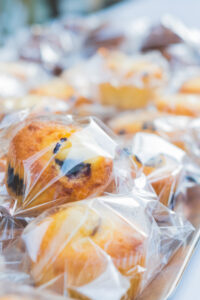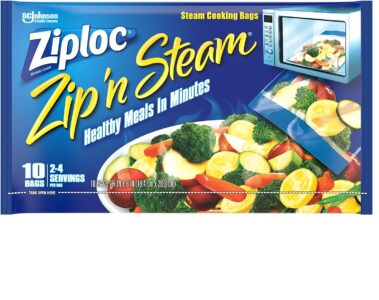In kitchen safety and microwave etiquette, whether one can put plastic wrap in the microwave oven is a common concern. The use of plastic wrap is prevalent in food storage and preservation, but its compatibility with the microwave raises important considerations for health and safety.
Food safety is always a concern while reheating leftovers in the microwave oven. There are many options to consider regarding cooking safety and heating plastics.
Can you put plastic wrap in the microwave oven?
Putting plastic wrap in the microwave is generally not recommended unless the packaging explicitly states that it is microwave-safe. Some plastic wraps can release harmful substances when heated and may melt or warp in the microwave.
If you need to cover food while microwaving, using microwave-safe containers or lids specifically designed for microwave use is safer. Always follow the instructions provided by the manufacturer on the packaging to ensure the safe use of any materials in the microwave.
Is it safe to wrap hot food in plastic wrap?
When wrapping hot food in plastic wrap, it’s essential to use plastic wrap labeled as microwave-safe or specifically designed for hot foods. Regular plastic wrap may not be suitable for wrapping hot items as it can melt or release harmful substances when exposed to high temperatures.
Microwave-safe plastic wrap is designed to withstand the heat generated in a microwave and is less likely to release harmful chemicals into your food. Alternatively, consider using microwave-safe containers or lids designed for use in hot environments.

Is Glad plastic wrap microwave safe?
Glad plastic wrap typically includes a statement on the packaging indicating whether it is microwave-safe. It’s essential to check the specific product’s microwave-safe label or packaging for instructions or symbols indicating whether it can be used safely in the microwave.
According to the website: “ClingWrap can be used outside of the kitchen too. It is great to use for preventing leaks in toiletries when traveling, wrapping wet paint brushes to use later, or keeping items in drawers when moving. Glad ClingWrap contains no plasticizer, and is BPA free and microwave safe.”
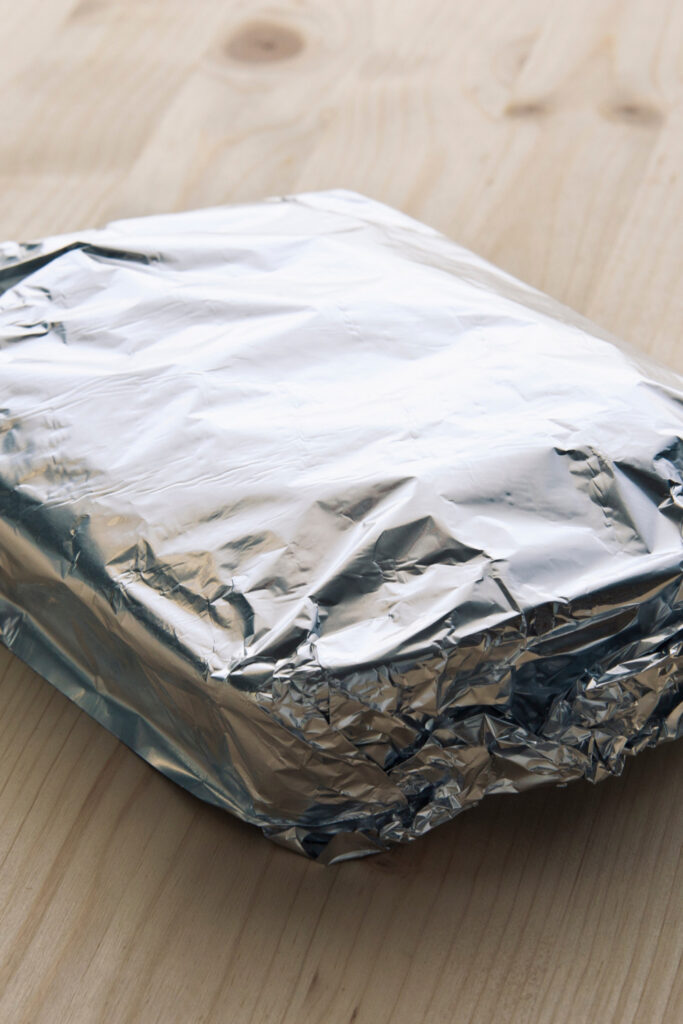
Can you put aluminum foil in the microwave?
In general, putting regular aluminum foil in the microwave is unsafe. When exposed to microwaves, aluminum can reflect the waves and cause sparks, which may lead to a fire. Additionally, using aluminum foil in the microwave can damage the appliance and pose a safety risk.
If you need to use foil in the microwave, make sure to use only microwave-safe aluminum foil. Microwave-safe foil is designed to allow microwaves to pass through without causing sparks. However, following the product’s instructions carefully and using it only as directed is essential.
What is the safest thing to cover food in a microwave?
The safest options for covering food in a microwave are materials that are labeled as microwave-safe. Here are some common and safe choices:
- Microwave-Safe Lids or Covers: Many microwave-safe containers come with lids designed for microwave use. These lids can help contain steam and heat.
- Microwave-Safe Glass Containers: Glass containers labeled as microwave-safe are a good option for reheating food. Make sure they don’t have any metallic parts, as metal can cause sparks in the microwave.
- Microwave-Safe Ceramic Dishes: Choose dishes that are labeled as microwave-safe. Avoid using ceramics with metallic elements, as they can cause sparks.
- Microwave-Safe Paper Towels or Napkins: If you need to cover food loosely to prevent splatters, you can use microwave-safe paper towels or napkins. Avoid regular paper towels with printing or patterns, as they may contain inks that can release harmful substances when heated.
- Microwave-Safe Plastic Wrap: Some plastic wraps are specifically designed for microwave use. Look for those labeled as microwave-safe, and follow the instructions on the packaging.
Always read and follow the instructions provided by the manufacturer on the packaging to ensure the material is safe for microwave use.
Can wax paper go in the microwave?
Wax paper is generally not recommended for use in the microwave. Wax paper is coated with a thin layer of paraffin wax, and when the plastic film is exposed to high temperatures, it can melt or even catch fire. Putting wax paper in the microwave may result in a mess, damage to the appliance, or safety hazards.
Is it OK to microwave Ziploc bags?
While Ziploc bags are convenient for storing and transporting food, the off-brand versions are not all designed to be used in the microwave. It’s crucial to check the packaging or look for specific instructions on whether the Ziploc bags are labeled as microwave-safe.
According to the Ziploc website: “All Ziploc® brand Containers and microwavable Ziploc® brand Bags meet the safety requirements of the U.S. Food and Drug Administration (FDA) for temperatures associated with defrosting and reheating food in microwave ovens, as well as room, refrigerator and freezer temperatures.”
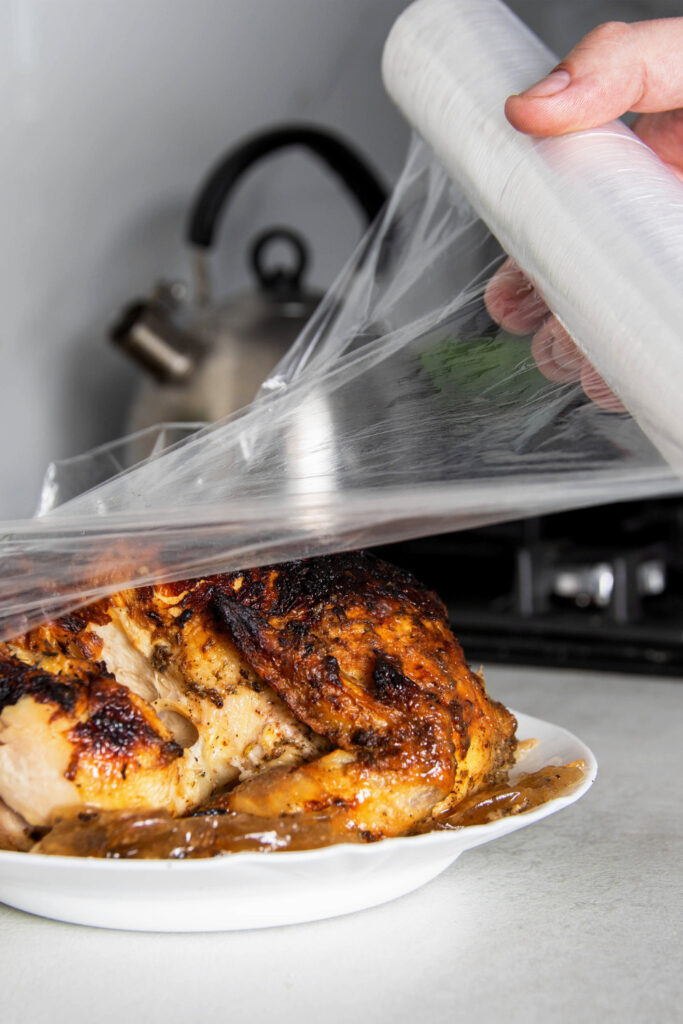
Are there cancer-causing substances in plastic wrap that will release when heated?
Certain types of plastic wrap may contain substances that could be released when heated; in some cases, these substances could be linked to health concerns. One such group of chemicals is phthalates, which are sometimes used in producing plastics, including plastic wrap. Phthalates are known to be endocrine disruptors, and some studies have suggested potential health risks associated with exposure to high levels of these chemicals.
When using plastic wrap, especially in the microwave, it’s crucial to follow the manufacturer’s instructions and use products labeled as microwave-safe. Microwave-safe plastic wrap is designed to withstand the heat generated in a microwave without releasing harmful substances.
To minimize potential risks, consider using alternative materials for covering food in the microwave, such as microwave-safe glass or ceramic containers or microwave-safe paper towels. Always follow safety guidelines and recommendations provided by the manufacturer of the specific plastic wrap product you are using.
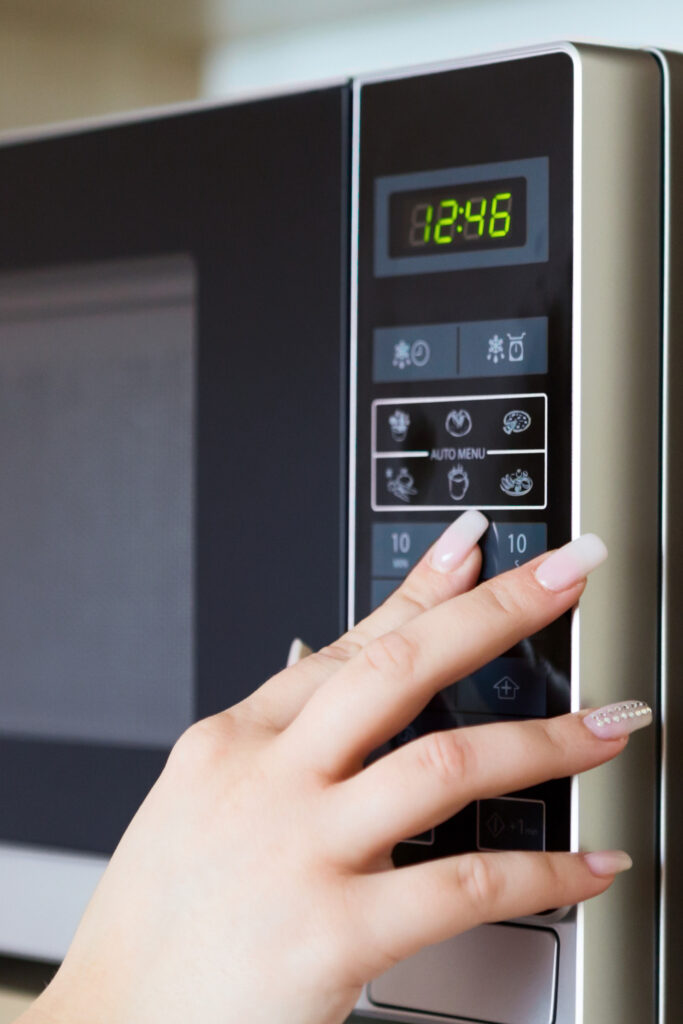
What are the best choices for leftover food storage?
The best food storage options for leftovers depend on the type of food and how you plan to reheat or consume it later. Here are a variety of products that are popular and safe food storage options:
- Glass Containers:
- Pros: Microwave-safe, oven-safe, and resistant to staining and odors. Glass containers are durable and can be used for both storing and reheating food.
- Cons: Heavier and more prone to breakage than plastic.
- Plastic Containers (BPA-free and Microwave-Safe):
- Pros: Lightweight, durable, and often more affordable than glass. Look for containers labeled as BPA-free and microwave-safe.
- Cons: Some plastics may stain or absorb odors over time, and there are concerns about certain chemicals in plastics.
- Stainless Steel Containers:
- Pros: Durable, resistant to staining and odors, and safe for reheating on the stovetop. They are also a good eco-friendly option.
- Cons: Not suitable for microwaving unless explicitly labeled as such.
- Silicone Storage Bags:
- Pros: Reusable, airtight, and can be used for both storing and reheating food. Silicone bags are a more sustainable option.
- Cons: Can be expensive compared to single-use plastic bags.
- Aluminum Foil Containers:
- Pros: Lightweight, disposable, and suitable for both storing and reheating food.
- Cons: Not suitable for all types of foods, and may not be as environmentally friendly as reusable options.
- Bee’s Wrap or Reusable Beeswax Wraps:
- Pros: Eco-friendly alternative for covering and wrapping food. Can be used for cheese, fruits, vegetables, and more.
- Cons: Not suitable for all types of foods, and not designed for reheating.
Remember to choose storage containers based on the specific needs of the food you’re storing and reheating. Regularly check and replace containers that show signs of wear or damage to ensure food safety.
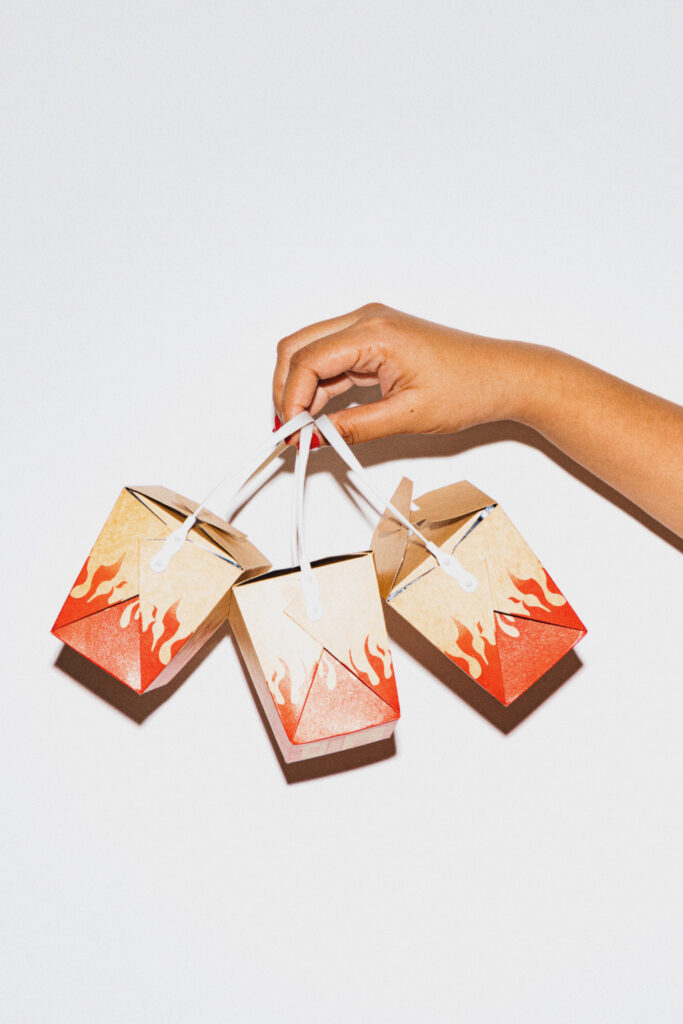
Can you microwave leftover take-out containers?
The short answer is that it depends. The safe option is to throw away any containers that are made of styrofoam, cardboard, or aluminum. Whether you can microwave leftover take-out containers depends on the material of the container and whether it’s labeled as microwave-safe. Here are some common types of take-out containers and considerations:
- Styrofoam Containers:
- Many Styrofoam (expanded polystyrene foam) containers are not safe for microwaving, as they can release harmful chemicals when heated. It’s generally best to transfer the food to a microwave-safe container before reheating.
- Plastic Containers:
- Some plastic take-out containers are microwave-safe, while others are not. Look for a microwave-safe symbol on the container or check the packaging. If it’s not labeled as microwave-safe, transfer the food to a suitable container before microwaving.
- Cardboard Containers:
- Cardboard containers are generally not suitable for microwaving. They can catch fire or release harmful chemicals when exposed to high heat. Transfer the food to a microwave-safe dish before reheating.
- Aluminum Foil Containers:
- While aluminum foil containers are suitable for the oven, they are not safe for the microwave unless explicitly labeled as microwave-safe. Transfer the food to a microwave-safe dish before reheating.
Always err on the side of caution and transfer your food to a microwave-safe container if you are unsure about the safety of the original take-out container. Using the wrong type of container can lead to food contamination, damage to the container, or even a fire hazard. There is also a chance of health problems, adverse effects, and a risk of cancer.
The good news is that there are many ways to microwave food without dangerous chemicals seeping in once you heat food. Avoid adverse effects and choose microwave-safe products for reheating your food. Specifically, look for BPA-free plastic. There are a variety of different materials to choose from and numerous ways to get the job done. Hopefully, this article has provided more insight to the issue at hand.

